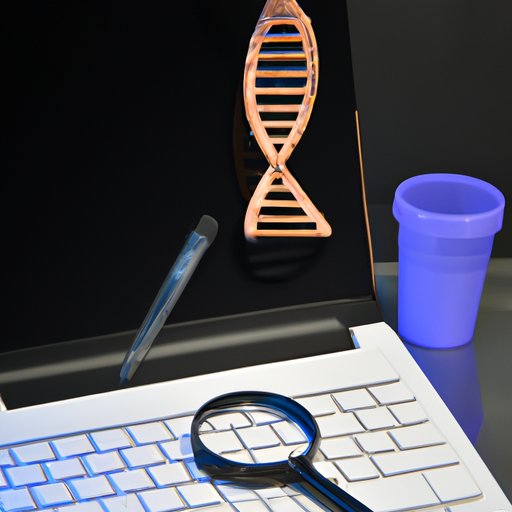If forensic science were a multifaceted gemstone, which facet would sparkle most brightly? Determining the “most important” topic in forensic science resembles pinpointing the keystone in a complex arch; several elements vie for primacy, each critical for the arch’s structural integrity. While DNA analysis often seizes the spotlight, a strong argument can be made for the foundational and often overlooked realm of evidence integrity and chain of custody. Its compromised integrity undermines the validity of all subsequent analyses.
I. The Primacy of Evidence Integrity
At the heart of forensic science lies the principle of locard’s exchange principle: every contact leaves a trace. But this trace, this silent witness, can only testify truthfully if meticulously preserved and rigorously tracked. Evidence integrity, encompassing proper collection, preservation, and documentation, forms the bedrock upon which all forensic analyses rest. Without it, even the most sophisticated DNA profiling or trace evidence analysis becomes moot, potentially leading to miscarriages of justice.
II. Chain of Custody: The Paper Trail of Justice
The chain of custody is more than just a procedural formality; it is the chronological documentation, the audit trail, that meticulously records the seizure, custody, control, transfer, analysis, and disposition of evidence. Any break in this chain introduces reasonable doubt, casting a shadow over the admissibility of the evidence in court. Consider a blood sample collected at a crime scene. If the documentation fails to conclusively demonstrate that the sample remained under secure custody from the moment of collection to the time of analysis, its evidentiary value is severely compromised. The importance of maintaining an unbroken chain cannot be overstated.
III. Contamination: The Silent Saboteur
Evidence contamination represents a significant threat to the integrity of forensic investigations. Contamination can occur at any stage, from the crime scene itself to the laboratory. Cross-contamination, where DNA from one sample taints another, is a particularly insidious problem, capable of producing false positives and misleading results. Proper personal protective equipment (PPE), rigorous cleaning protocols, and meticulous sample handling are essential to mitigate the risk of contamination. A seemingly innocuous airborne particle can completely invalidate an otherwise perfect piece of analysis.
IV. Documentation: The Unsung Hero
Meticulous documentation is the backbone of evidence integrity. Detailed notes, photographs, sketches, and diagrams are crucial for reconstructing the crime scene and accurately portraying the context in which evidence was collected. These records serve as a permanent memory, allowing forensic scientists to later review their findings, verify their procedures, and defend their conclusions under scrutiny. Ambiguous or incomplete documentation can open the door to challenges regarding the reliability of the evidence.
V. The Ripple Effect of Compromised Integrity
The ramifications of compromised evidence integrity extend far beyond the laboratory. Inaccurate or unreliable forensic evidence can lead to wrongful convictions, allowing perpetrators to remain free and potentially endangering the public. Furthermore, compromised evidence can undermine public trust in the justice system, fostering skepticism and cynicism. The impact on victims and their families can be devastating, compounding their suffering with the knowledge that justice may have been denied.
VI. Technological Advancements and the Integrity Imperative
As forensic science continues to evolve with technological advancements like advanced DNA sequencing and digital forensics, the imperative for evidence integrity only intensifies. More sensitive analytical techniques can detect even minute traces of evidence, making contamination a greater concern. Furthermore, the complexity of digital evidence requires sophisticated validation and authentication procedures to ensure its reliability and prevent manipulation.
VII. Training and Education: Fortifying the Foundation
Ensuring evidence integrity requires comprehensive training and education for all personnel involved in the forensic process, from crime scene investigators to laboratory analysts. This training must cover proper evidence collection techniques, chain of custody procedures, contamination control measures, and documentation protocols. Regular proficiency testing and continuing education are essential to maintain competence and adapt to evolving best practices. The human element is paramount.
VIII. Quality Assurance and Accreditation
Forensic laboratories must adhere to rigorous quality assurance standards and seek accreditation from reputable organizations. Accreditation ensures that laboratories meet established standards for personnel qualifications, equipment maintenance, analytical procedures, and reporting practices. Regular audits and proficiency testing are essential components of quality assurance, providing independent verification of laboratory performance.
IX. Addressing the “CSI Effect”
The “CSI effect,” wherein jurors hold unrealistic expectations of forensic evidence due to its portrayal in popular media, poses a challenge to maintaining evidence integrity. Jurors may expect definitive answers and irrefutable proof, even when the evidence is circumstantial or subject to interpretation. Forensic scientists must be able to effectively communicate the limitations of forensic science and explain the importance of evidence integrity to ensure that jurors understand the true meaning and significance of the evidence.
X. Conclusion: The Indelible Mark of Integrity
While numerous disciplines within forensic science hold immense significance, the unwavering commitment to evidence integrity stands as the linchpin upon which justice is built. It is not merely a procedural matter; it is an ethical obligation, a solemn vow to uphold the truth and protect the innocent. By prioritizing evidence integrity, the forensic science community can safeguard the reliability of its findings, ensure fairness in the justice system, and maintain public trust in the pursuit of truth. Its importance transcends any single analytical technique or technological advancement; it is the enduring foundation of forensic science itself.










Leave a Comment